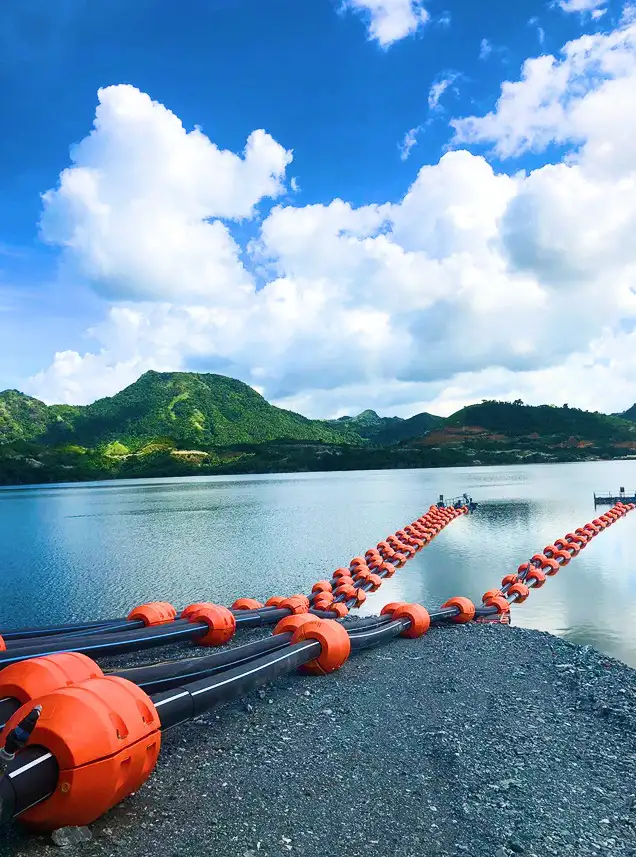
High-density polyethylene (HDPE) pipes have emerged as a superior choice for a wide range of applications within the mining industry, progressively replacing traditional materials like steel and concrete. Their unique properties make them exceptionally well-suited to the harsh and demanding conditions often found in mining operations.
The mining industry operates in some of the most demanding and unforgiving environments on Earth. The infrastructure used must withstand extreme abrasion, corrosive chemicals, high pressures, and rugged terrain. For decades, traditional materials like steel, ductile iron, and concrete were the standard for piping systems. However, these materials come with significant drawbacks, including corrosion, heavy weight, and difficult installation.
The high-density polyethylene (HDPE) pipe has emerged as a superior, game-changing material that is revolutionizing fluid and material transport in mining operations worldwide. Its unique combination of durability, flexibility, and cost-effectiveness makes it the preferred choice for a vast range of applications, driving safety, efficiency, and sustainability.
1. Unmatched Abrasion Resistance
Mining applications frequently involve transporting abrasive slurries, such as tailings, ore concentrates, and mine backfill.
Problem with Steel: Steel pipe wears down quickly from the inside due to the constant friction of abrasive particles, leading to thinning walls, leaks, and eventual failure.
HDPE Solution: HDPE has exceptional abrasion resistance, often outlasting steel by a factor of 3 to 5 in slurry applications. Its smooth inner surface and inherent toughness allow it to absorb the impact of abrasive particles without gouging or wearing away, dramatically extending its service life.
2. Superior Corrosion and Chemical Resistance
Mines are chemically aggressive environments, dealing with acid mine drainage (AMD), process chemicals, and saline water.
Problem with Steel: Metallic pipes are highly susceptible to both internal and external corrosion, requiring expensive coatings, cathodic protection, and frequent replacement.
HDPE Solution: HDPE is chemically inert and does not rust, rot, or corrode. It is resistant to the vast majority of acids, alkalis, and salts found in mining, ensuring a long, maintenance-free lifespan without the need for protective layers.
3. The "Leak-Free" Advantage: Butt Fusion Welding
Pipe joints are historically the weakest point in any pipeline.
Problem with Traditional Pipes: Mechanical joints and flanges on steel pipes are prone to leaking, especially under pressure surges or ground movement. These leaks can cause environmental contamination, loss of valuable product, and create safety hazards.
HDPE Solution: Sections of HDPE pipe are joined using butt fusion, a thermal welding process. This process heats the pipe ends and fuses them together, creating a single, continuous, monolithic pipeline. The fused joint is as strong as the pipe itself, eliminating any possibility of leaks and providing superior performance in high-pressure applications.
4. Flexibility and Durability
Mining sites often have unstable ground, seismic activity, and rough, uneven terrain.
Problem with Rigid Pipes: Steel and concrete pipes are rigid and brittle. Ground shifts or subsidence can cause them to crack or their joints to fail.
HDPE Solution: HDPE is highly flexible and can be bent to a radius of 20-25 times its nominal diameter. This allows it to conform to natural terrain, navigate obstacles without extra fittings, and withstand significant ground movement, vibrations, and even seismic events without breaking.
5. Lightweight and Easy Installation
Logistics and installation in remote mining locations are major cost drivers.
Problem with Steel: Steel pipe is extremely heavy, requiring heavy lifting equipment (cranes, side booms) for handling and installation. This increases project time, fuel consumption, and labor costs, while also posing greater safety risks.
HDPE Solution: HDPE is approximately one-eighth the weight of equivalent steel pipe. It can be handled with smaller, more nimble equipment or even by hand for smaller diameters. This leads to:
Faster installation times.
Lower freight and transportation costs.
Reduced need for heavy machinery.
Safer handling for work crews.
Slurry Transportation: Conveying abrasive slurries like iron ore, copper ore, gold ore, and other mineral concentrates or tailings from processing plants to storage or disposal facilities.
Water Management:
Mine Dewatering/Pit Dewatering: Removing excess water from mining sites to maintain safe and efficient operations.
Process Water Supply: Supplying water for various mineral processing steps (e.g., flotation, crushing, grinding, dust suppression).
Water Transportation: General water supply and drainage systems for the mine, including potable water.
Leachate Collection: In heap leaching operations, collecting and transporting leachate solutions containing dissolved minerals.
Tailings Management: Transporting waste materials (tailings) from the mining site to designated storage areas.
Chemical Handling: Transporting various chemicals and reagents used in mineral extraction processes (e.g., acids, flocculants).
Ventilation Systems: In underground mining, HDPE pipes can be used for ventilation conduits to ensure proper air circulation.
Solution Mining: Used in the distribution of leach solutions to ore heaps for mineral extraction.
Fire Protection Systems: Increasingly used for firewater supply due to their reliability and resistance.
HDPE pipe is no longer an alternative; it is the industry standard for high-performance piping in modern mining. Its ability to withstand abrasion, corrosion, and physical stress while offering a leak-free, easy-to-install system provides a clear advantage over traditional materials. By adopting HDPE, mining companies can significantly lower their operational costs, improve site safety, reduce environmental impact, and increase the overall reliability and longevity of their critical infrastructure.
